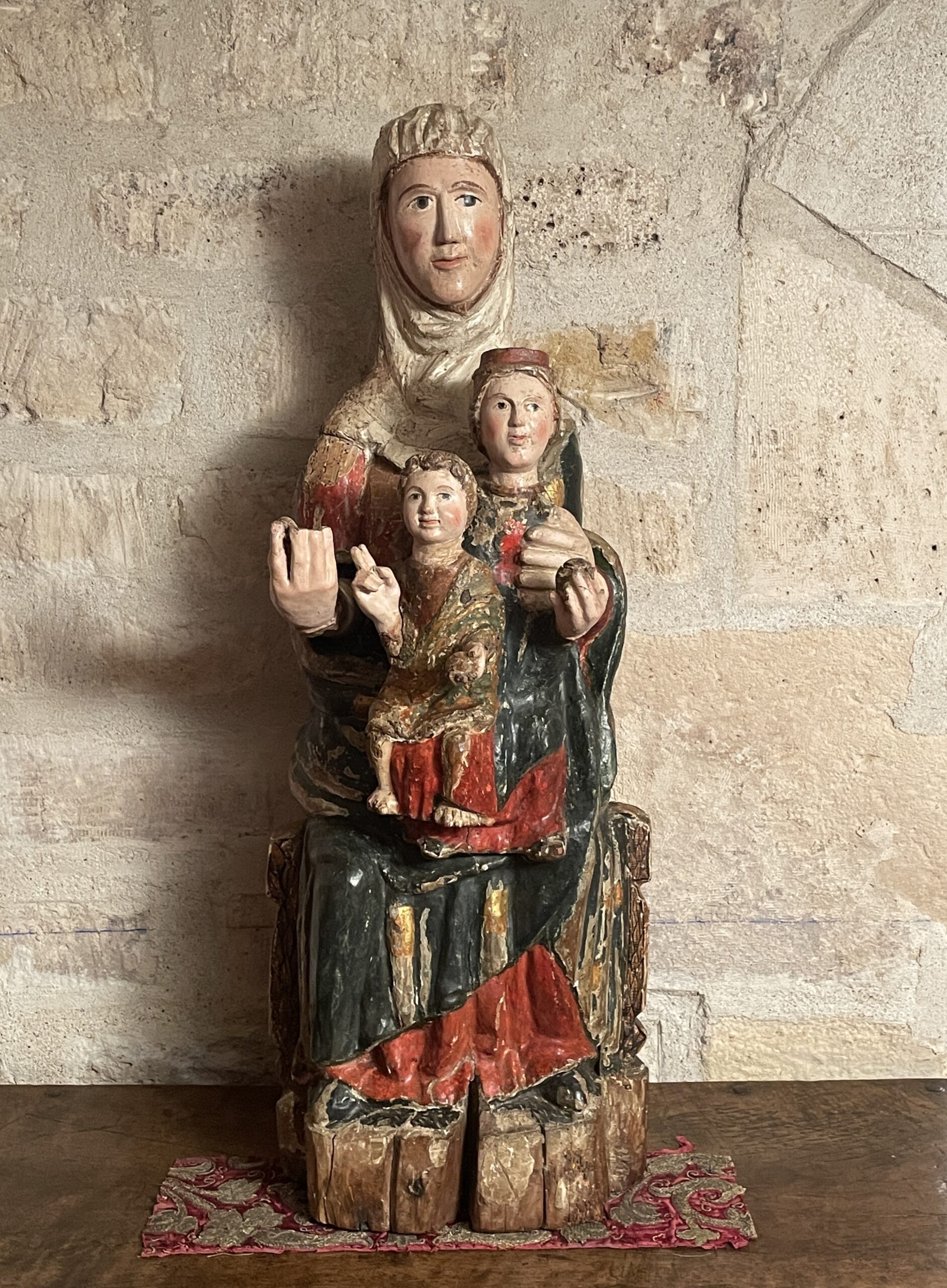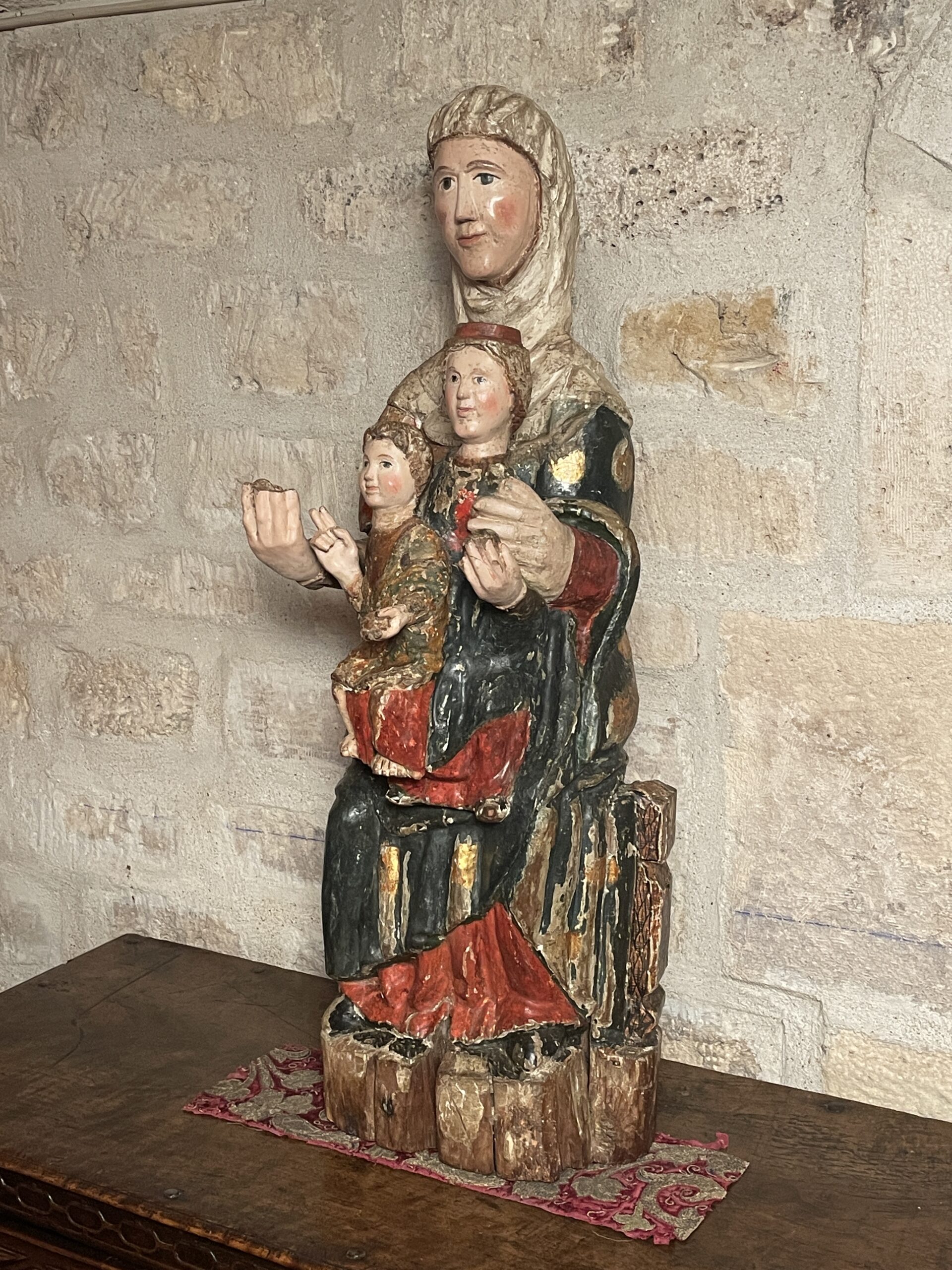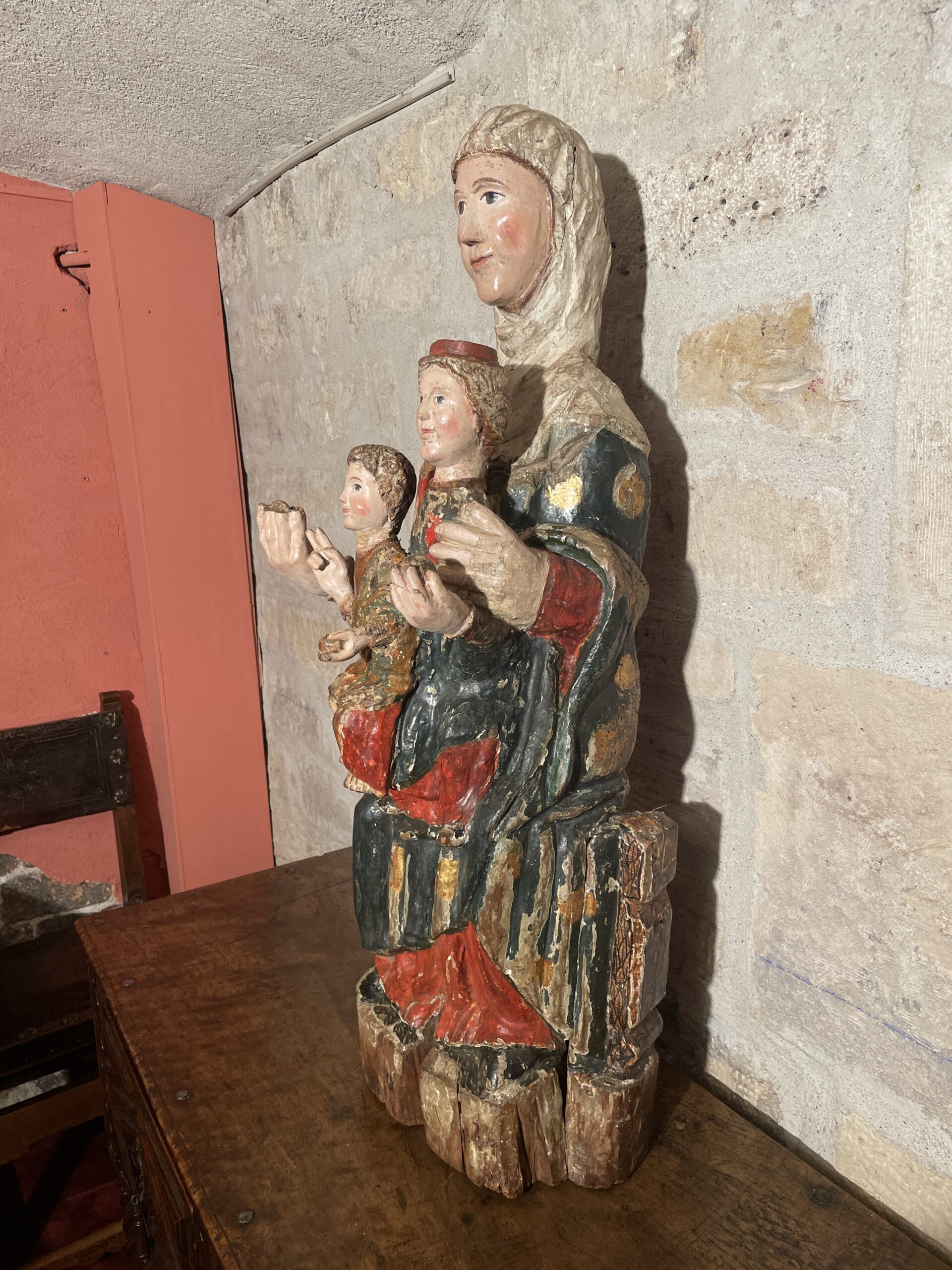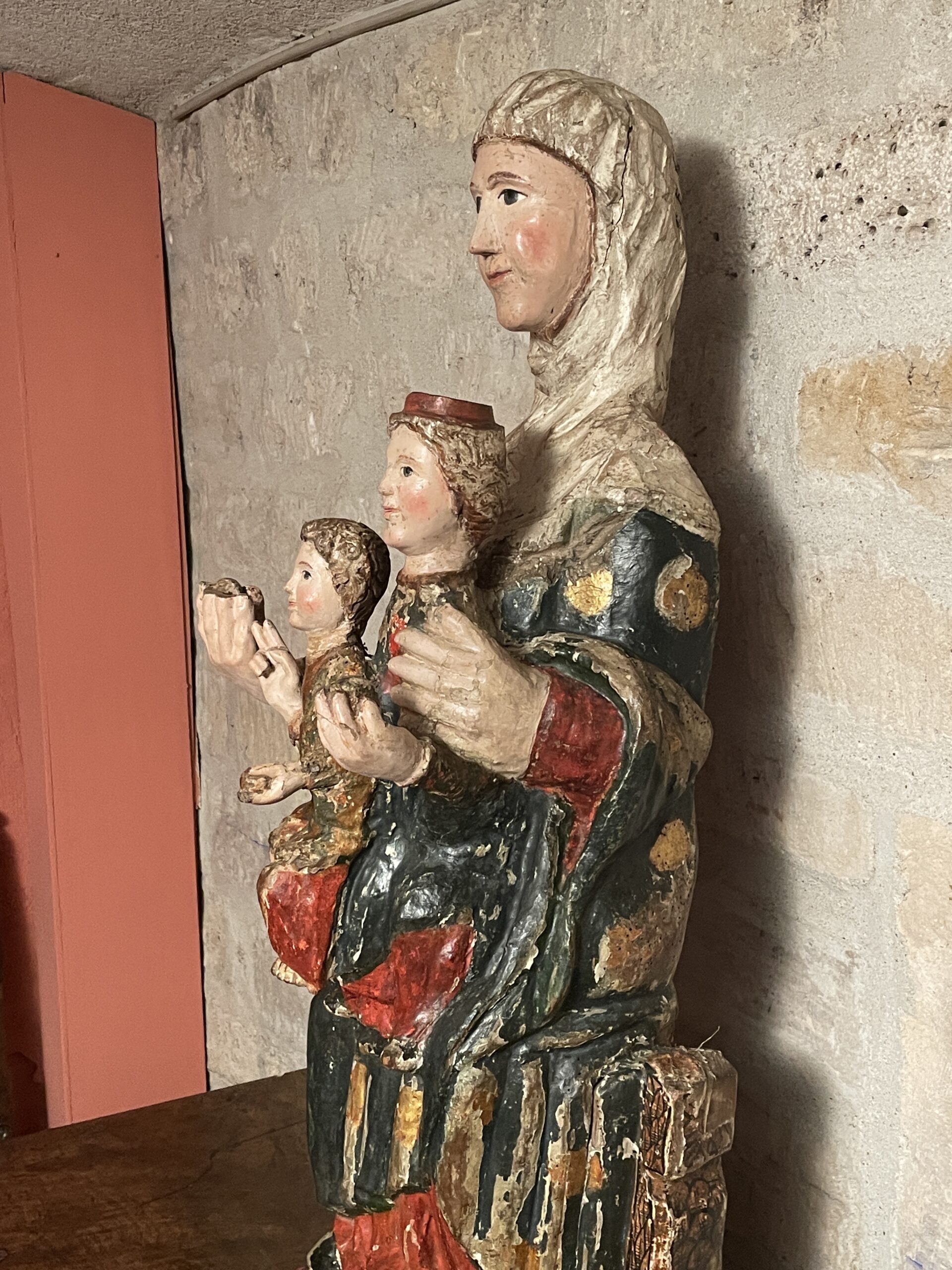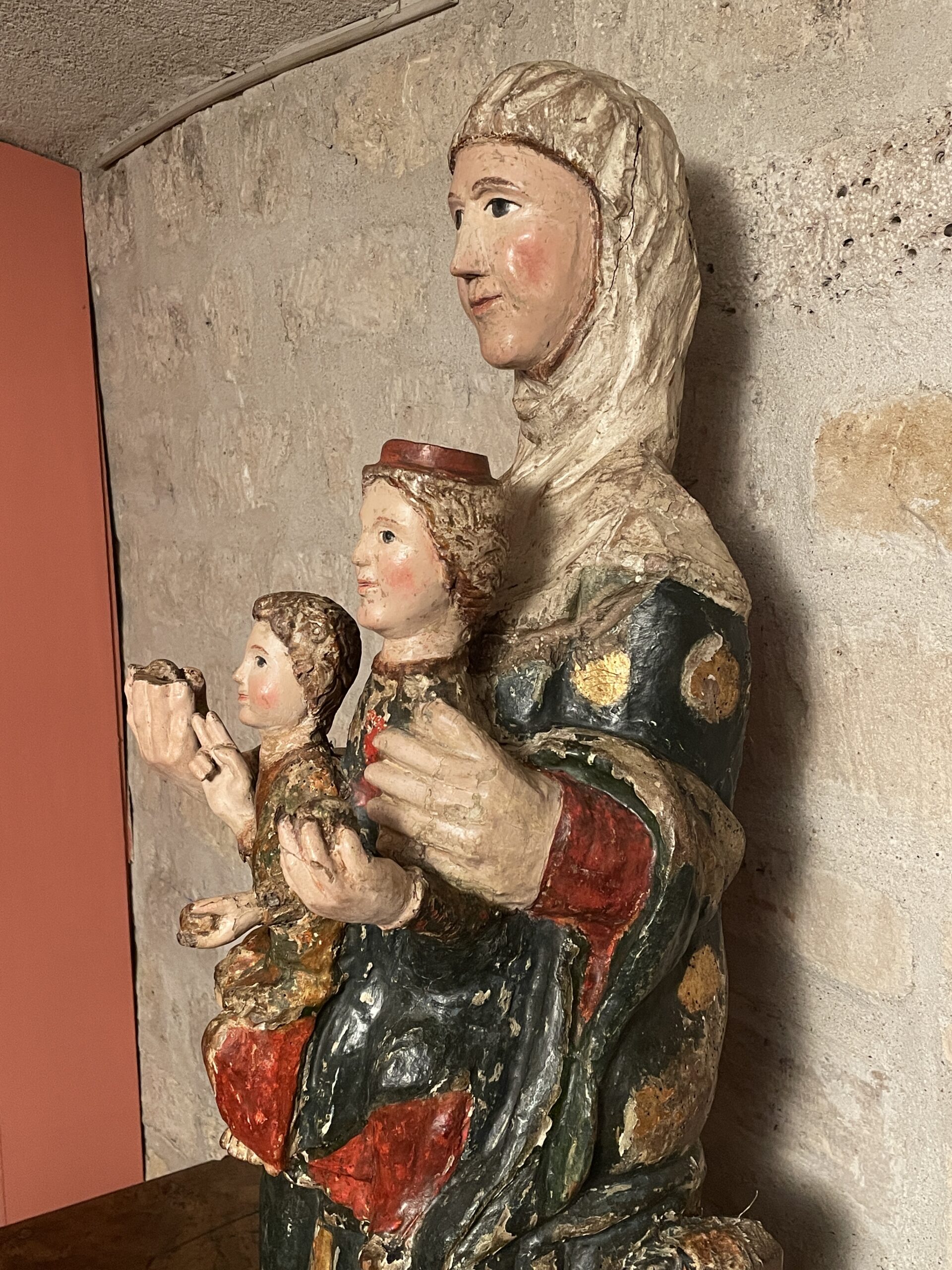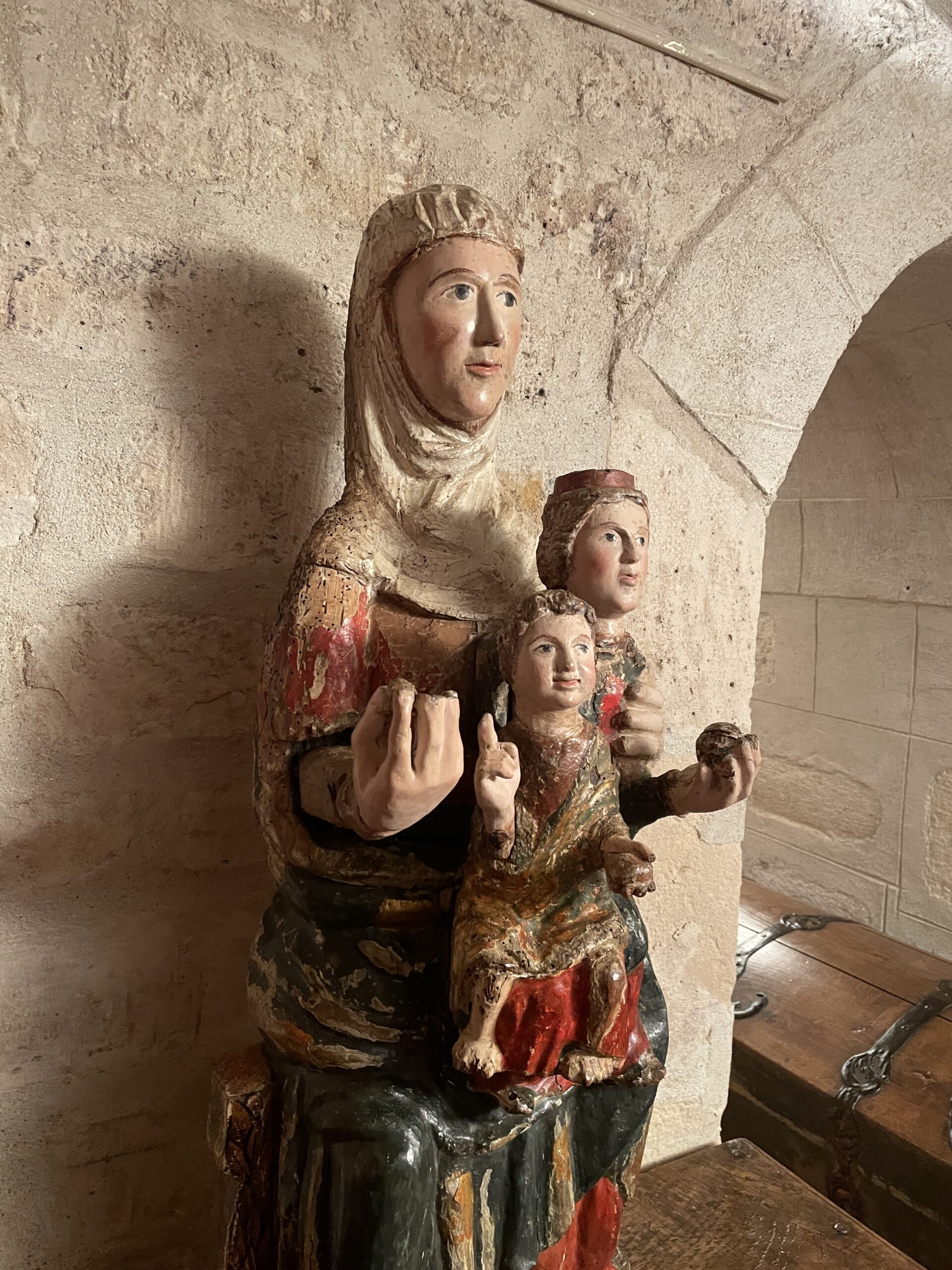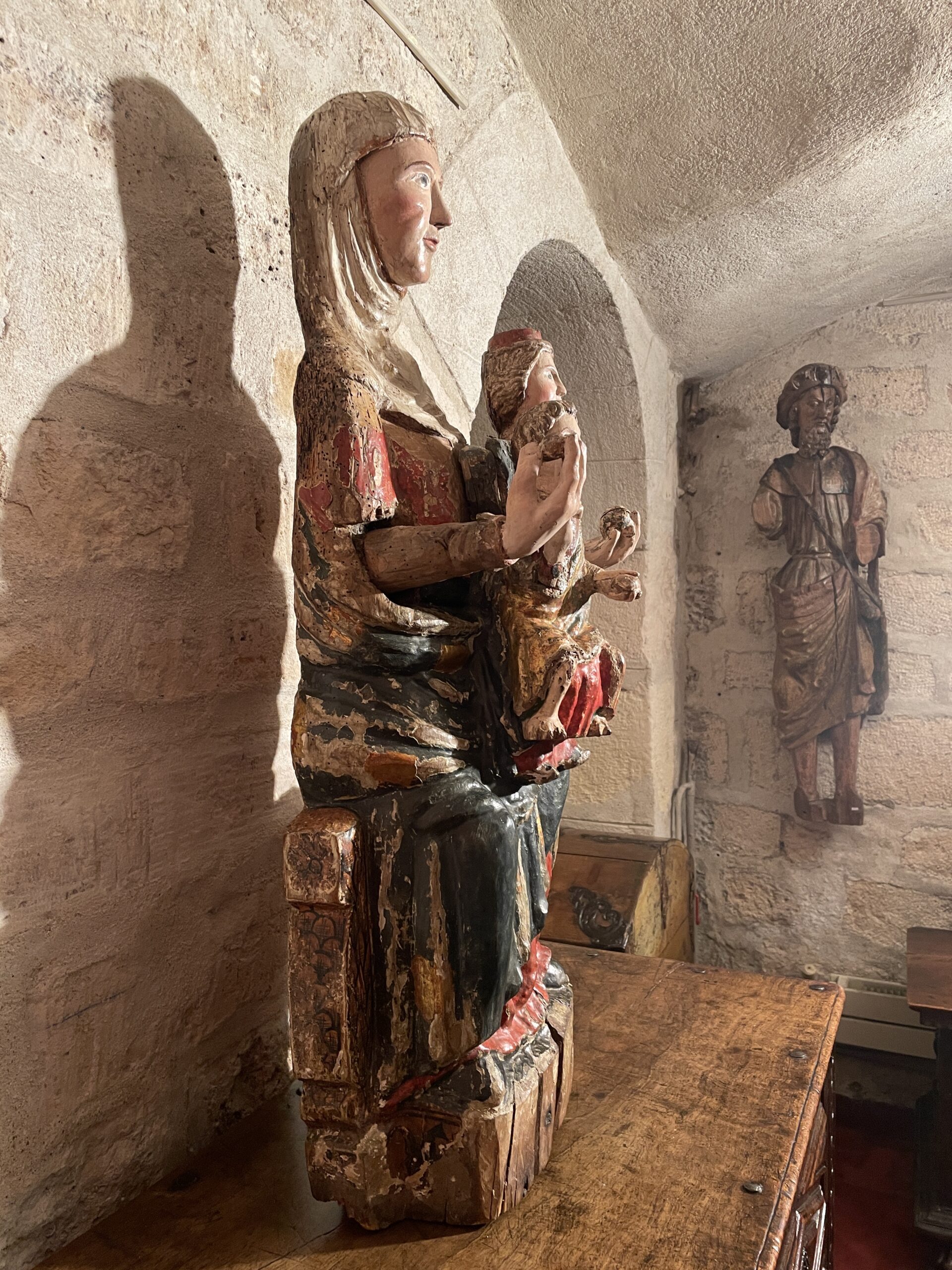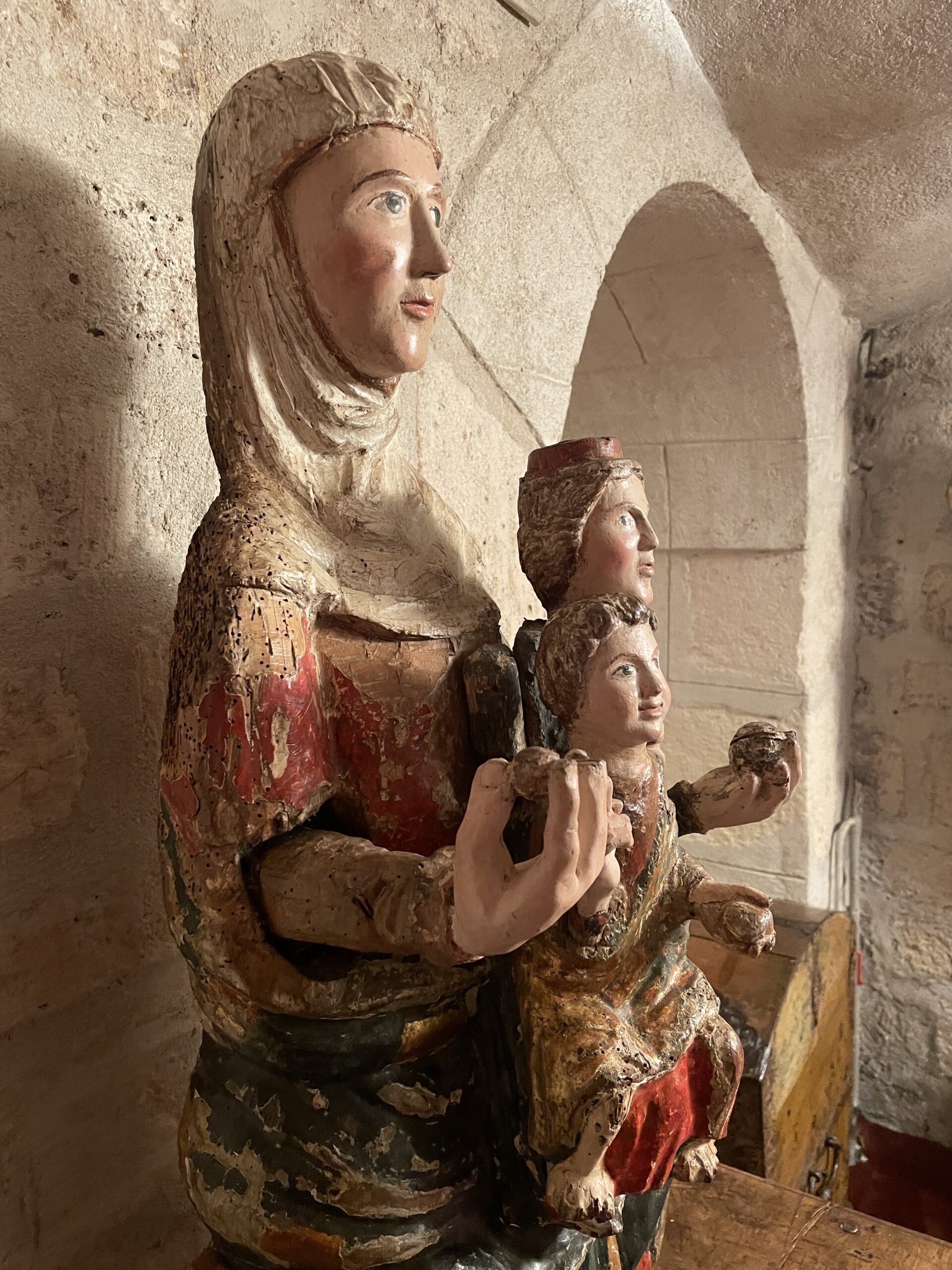Description
Very popular at the end of the Middle Ages in the Iberian Peninsula, the iconographic theme of Saint Anne Trinitarian unites three characters and three generations in an unusual trinity.
The theme developed within the context of the veneration of Saint Anne. Absent from the canonical biblical texts, the figure and story of the saint come from the apocryphal Greek narrative of the Protevangelium of James and its Latin adaptation, the Gospel of Pseudo-Matthew. Additionally, the dissemination of the stories in the Golden Legend, written between 1261 and 1266 by Jacobus de Voragine, firmly established its place in popular culture.
The figure of Saint Anne occupies a dominant position here. In a majestic posture, she is carved from beautiful polychromed walnut wood, hollowed out at the back. She sits on an ornate and molded bench-throne with decorations on the upper and lower parts. Wearing a veil forming a wimple, she surrounds the Virgin’s shoulder with her left hand, who is seated on her knees. The Virgin evidently wore a crown. On her knees, the Child Jesus blesses with his right hand, while with the other, just like his mother, he presents the globe.
This sculpture of popular character shows a certain archaism on several levels.
Firstly, through the superimposed composition of the figures.
Secondly, through the upright, well-anchored postures, with still drooping shoulders and quite prominent hands.
Finally, through the treatment of the garments with long linear folds, with the mantle returning in an apron at the front, falling in pleated folds, revealing pointed shoes.
This Holy Family, also called in Spain the Santa Generacio, aligns in its proportions with Galician Art, with a shortening of the legs in relation to the rest of the body.
However, the faces with warm and very expressive tones gain in naturalism, reflecting inner feelings. The sculpture thus plays its role as an intercessor for the faithful based on affective and familial reasons, very close to popular sentiment.
The main character, who is also the oldest, Saint Anne, held the flower of divine love, thus offering the faithful a more human way to approach the Mother of God and the Child. This theme, often repeated in the Middle Ages, would disappear after the Council of Trent.

